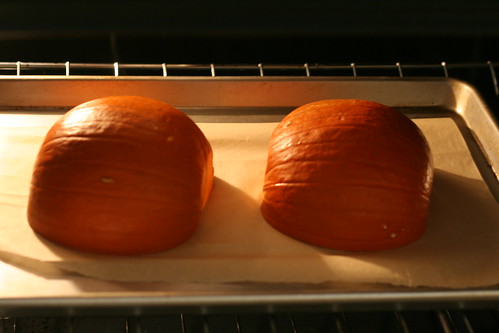 What says ‘autumn’ more to the discerning eye than beholding that lovely sight of overly-plump, spectacularly-orange gourds comfortably dotting the dusty landscape? No wonder we like them so much, our historical culture is full of them. “Peter, Peter pumpkin eater…” You know the rest.
What says ‘autumn’ more to the discerning eye than beholding that lovely sight of overly-plump, spectacularly-orange gourds comfortably dotting the dusty landscape? No wonder we like them so much, our historical culture is full of them. “Peter, Peter pumpkin eater…” You know the rest.
Wasn’t it a pumpkin that was transformed into a regal coach by her fairy godmother so that Cinderella could ride in luxury on her way to the Ball. You might be hard-pressed to find anything that could even come close to the dethroning the beloved pumpkin as king of autumn. For once pumpkins make their appearance, it can mean only one thing….the fall is here! And of course, fall means that spectacular showcase of color; scarlets, golds and rust making their appearances once more before littering the streets donned in their autumn attire. Of crisper, cooler mornings, early evenings, hot chocolate and a personal favorite, Halloween.

How was it a pumpkin was chosen to celebrate this event? Look no further than our past to find that answer. To anyone unfamiliar with the holiday, Halloween has roots in both pagan and Christian traditions. The early druids would celebrate the end of the summer in Europe with a bountiful harvest to appease the gods, while newer Christians, foregoing these pagan rites used this celebration instead to warn off evil spirits, calling upon saints to protect them from the upcoming winter and darker season.
It should come as no coincidence that Christians honor the day after Halloween, November 1st, as “All Saints Day”. We can thank our Irish immigrants for bringing this tradition across the pond, back in the Old Country, children carved turnips for ‘Jack O’lanterns’ to keep the devil at bay, but here in North America, these newer Americans quickly adopted the pumpkin as a more readily available alternative.

But what of that wonderful fruit? (pumpkin is a fruit, by the way). It has far more uses than wearing funny faces for one night. That luscious, spherical orange-skinned beauty not only yields a savory flesh for baking, the seeds are also a delicacy and are roasted in a variety of ways.
After you’ve created your jack o’lantern masterpiece, and dumped those slimy seeds onto dampened newspapers, hold on–don’t toss them out!
Don’t forget those aprons, because it will be messy. You might considergoing in a chef costume this Halloween if you get really good at it. You can salvage these morsels out of that blob of pumpkin innards and bake them with a little olive oil, sea salt or for the more adventurous palette, try something a little different, sprinkle a little sugar and cinnamon instead.
Most of us might be a bit daunted by the idea of baking a whole pumpkin (ahh, how can a mere mortal use a regular knife to cut through all that rind?) but do not fear, roasting a pumpkin is not only easy, the taste is far superior than the grocery store canned product. Find the adorable ‘Pie’ pumpkins in your produce section, you’ll recognize them by their small size and vibrant orange color.
Set your oven at 350 degrees and then take your pumpkin, slicing it horizontally, scoop out seeds and inner glop, and place sliced-side down on your baking sheet. You’ll need to cook them for 90 minutes. Once baked, take a large spoon and start scooping, the outer flesh should peel off at this time. You can blend your baked pumpkin to form a puree and then of course, use it for those wonderfully delicious pumpkin breads, cakes, pies and cookies.
Emma Rae Curtis is a costume/dressing up/makeup & accessories expert. She mainly writes about Halloween but also about all things costume and dress-up related.










